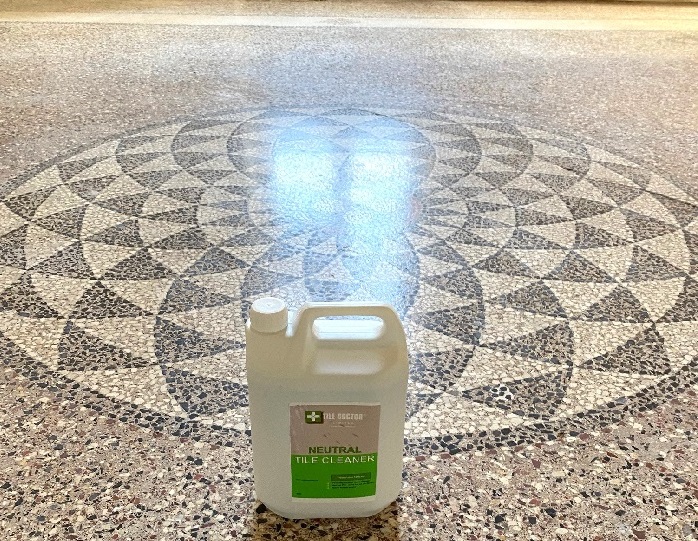One thing that makes bamboo flooring stand out for homeowners is its environmentally-friendly properties. Even still though, questions have arisen as to just how “green” it is and whether bamboo flooring is the best choice for your home or not.
As with any investment, there are many factors that affect the decision to make the switch. We checked out some common questions about the product to help you make an executive decision that’s right for you, your family, and your home.
1. How Do I Decide if Bamboo Flooring Is the Right Choice for Me?
Bamboo is an attractive, resilient, and cost-effective flooring style that’s booming in popularity for renovations and new homes. Compared to other hardwoods bamboo is much denser, making it an ideal option for homeowners - but the real decision depends on choosing a product you’ll love to live on in years to come.
Initially, people are drawn to the natural warmth of the bamboo material, which tends to inject a comfortable feeling into a home, and the color consistency it boasts compared to timber floors. Combined with its style variety and flooring options, easy-care maintenance, climate sustainability, and cost-effectiveness, bamboo flooring tends to be an easy choice for homeowners.
2. Where Can I Install Bamboo Flooring and How is it Installed?
Bamboo flooring is extremely versatile and can be installed in any room of your home either as a floating floor, fixed floor, or glued directly onto the subfloor. Like any hardwood flooring, bamboo can be damaged if excessive water is left to puddle for an extended period of time, so wet rooms such as bathrooms and laundries are best tiled instead.
Whilst bamboo flooring can be installed over existing tiles, timber, or concrete, it’s ideal to check for potential issues and if they’re covered in the installation warranty. In most cases, bamboo flooring combined with your current flooring style will work fine if the right glue is used to bond the two together. Tiles will require cleaning and sanding to help with this process.
Just consider how the combined height of your existing flooring in addition to the bamboo boards will impact areas such as full-length windows, door frames, and kitchen benches.
3. Are There any Bad Fumes During the Installation Process?
The type of bamboo flooring you purchase will determine the installation process and whether or not you will have to leave the home. Bamboo flooring can be purchased either as pre-finished panels or raw panels which will be sanded and polished on site.
Pre-finished bamboo requires no sanding or polishing in your home so there is no need to leave or be concerned about bad fumes. Whilst there can be a faint smell of the bonding glue for the first day, it’s not harmful and will stop once the floors dry. Sanding and polishing the floors on-site is the dustier alternative but still, depending on the installation company, it’s relatively clean and quick and the faint smell of glue will disappear after the first day or two.
4. Have the Bamboo Boards and Glue Used Been Tested for Health Risks?
Throughout Europe and Australia, strict guidelines are in place to ensure the glues used are manufactured to a safe level. Manufacturing companies that are reputable will always abide by these guidelines and test their products before distributing them.
The health and safety of you and your family are important so it pays to ask how your floor is impacted by any nasty chemicals. Whilst bamboo is an eco-friendly flooring solution, like a finished floor the glues and products used can emit toxins into your home. Formaldehyde is an organic compound commonly found in these products and is associated with health risks - but the amount of chemicals emitted will vary depending on how the planks are manufactured.
Reputable bamboo flooring companies will only use a very small amount of glue that has been safely tested during the manufacturing process. It’s not uncommon for overseas manufacturers to take shortcuts with the process so when it comes to your health, it’s best to ask how much is used and if the products meet the standards.
5. What Are the Environmental Benefits of Bamboo Flooring and How Sustainable is it?
The environmental impact of bamboo flooring is huge and offers green-conscious homeowners many benefits. As we are becoming more concerned about the sustainability of products we use around the home, bamboo flooring is like a breath of fresh air. In comparison to other woods, bamboo replenishes itself much quicker than grass – making it a highly renewable source.
Bamboo is not threatened by forestry, like hardwood, because cutting the stalks actually promotes faster growth. Thus it’s one of the more sustainable flooring solutions. Most flooring is made from Moso species, different from what pandas and other animals eat – enabling the food sources for wildlife to be protected.
6. How Durable Is Bamboo Flooring?
The durability of bamboo flooring depends on three factors, stalk construction (for example, woven strand bamboo flooring), materials added (adhesives), and the overall quality of the bamboo.
Homeowners often find it hard to comprehend just how durable bamboo flooring is compared to other hardwoods because it’s not actually wood itself. Its durability tends to come from the compression used when manufacturing and producing bamboo. The most hardwearing form of bamboo goes under 2000 tonnes (the equivalent of two jumbo jets) of pressure to make for an incredibly dent-resistant surface.
7. How Will My Bamboo Flooring React to Humidity?
Bamboo flooring can be prone to cupping and warping when exposed to humidity. In an environment that is very dry, the bamboo floors can shrink and expand, causing the bamboo to crack.
How your bamboo flooring reacts to humidity and exposure to moisture depends on its durability and board design. Despite excessive moisture having the ability to ruin any wood floor, bamboo is more advantageous in humid climates because it doesn’t swell and contract as much.
Source: www.DoItYourself.com








